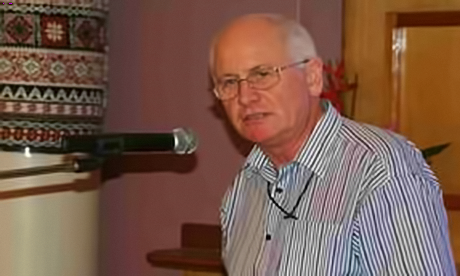The public reviews of the CTV building collapse in the Christchurch earthquakes and the Pike River mine disaster have revealed the profound practical significance of faith existing or failing in relationships and individual actions.
Both disasters have raised questions over engineering, design and rescue management. Both situations reveal a sorry record of law and regulation that was in place to apparently ensure safety and manage difficulties.
Yet the requirements failed to overcome external financial pressures and ensure a readiness to act in ways that might have brought the best from such compliance expectations.
Governments are looked to for law and regulation enabling a society to function with a reasonable degree of certainty and safety. From criminal law to road code to the daily challenges of managing Occupational Safety and Health compliance, there is enough law and regulation to bury the average citizen in a field of paper and computer data.
While rules attempt to provide certainties, acts of good faith animate their purposes. Faith is the placing of trust in another, a belief or doctrine. Without faith, relationships or development of ideas or exploration of landscape or testing of theories would not occur.
Faith stands at the root of all a person does. Any action is expression of faith and faith is something the Church has always held central to its belief.
If, indeed, recent disasters are founded in a lack of faith between people to fulfil that which law and regulation may have intended, what might the Church have to offer in approaching the concerns? Simply, the Church organises itself around and proclaims a central tenet of faith. The faith has a lively character expressed in three distinct, interrelated dimensions.
The first dimension acknowledges an ultimate, spirit-related, point of reference. Naming God prevents the tendency for individual and community hubris having the last say in any perception or action. This might be seen as a vertical faith, directed and given to the worth of pursuing ideals of love, forgiveness, justice, compassion and peace.
The second dimension is that same ‘vertical’ faith becoming, as it were, horizontal. A practical expression of trust placed and reciprocated between individuals, communities and institutions. This is apparent, for example when someone recognises and cares for others, fulfils legal obligation or when a contract or treaty is adhered to for the benefit of all parties.
The third dimension is when a society structures and enacts shared belief in values evidenced in public policies enabling laws, services and the like to function for the well-being ofall within it.
The Church draws on a tradition, if, sadly, not consistent practice, of being the herald, bearer and promoter of such faith. It is the role of Church in the public domain to animate and articulate an approachable, critical faith in order to identify the values of love, forgiveness, justice, compassion and peace being worth acting on.
Without a ground of faith between people, within institutions and among communities, it will be near impossible for any law or regulation to gain a meaningful hold. Rules may govern transactions and ensure criteria for compliance, however, practical mutual faith between people about the context and quality of those same rules will determine their worth and the well-being of the society the rules are set for.
The Church is a long standing voluntary organisation that continues to find its reason for being in the faith that reminds of mortality, values relationships and supports the mutuality of life-giving values. The call has always been to keep the faith.
– John is married to Margaret with three adult children. Ordained in 1984 he is currently the Director of Vaughan Park Anglican Retreat Centre in the Auckland Diocese.
Image: Anglican Taonga
